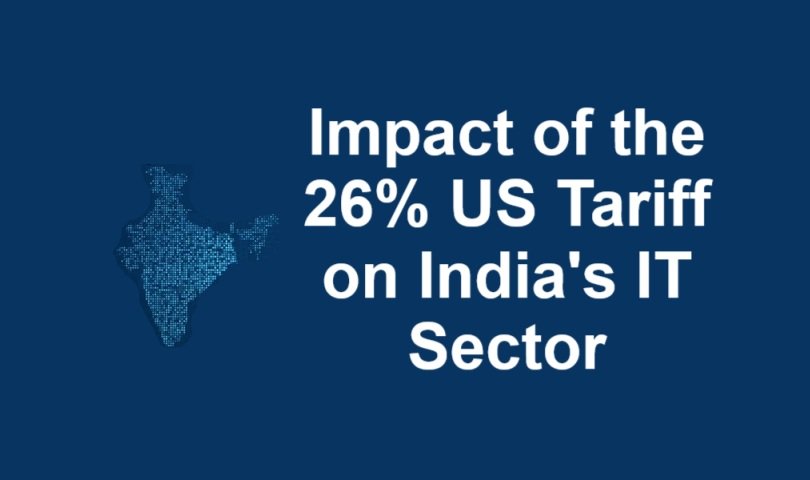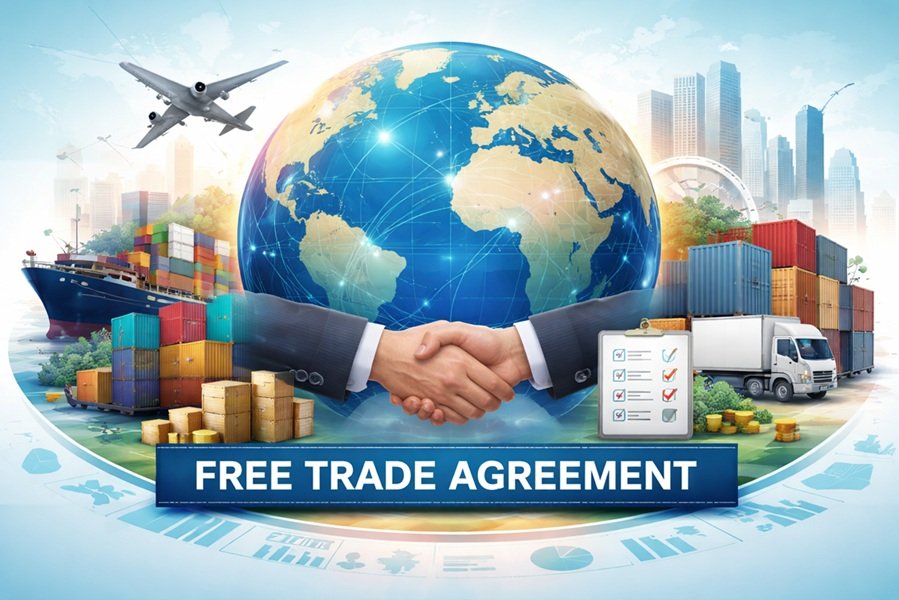
Introduction
The recent decision by the United States to impose a 26% tariff on certain imports from India has sparked concerns across multiple sectors of the Indian economy. While these tariffs primarily target tangible goods, their indirect effects on India’s services industry, including the Information Technology (IT) sector, warrant closer analysis.
Understanding the US Tariff Policy
Tariffs are used as economic tools to regulate trade, protect domestic industries, or retaliate against perceived trade imbalances. The newly imposed 26% tariff applies to a variety of Indian exports, including textiles, auto parts, electronics, and gems & jewelry. However, the IT sector, which primarily exports services rather than physical products, is not directly subject to these tariffs.
Direct and Indirect Impacts on the Indian IT Sector
1. Limited Direct Impact
India’s IT sector primarily exports software services, cloud computing, IT consulting, and business process outsourcing (BPO) rather than physical hardware. Since tariffs generally apply to goods rather than services, Indian IT firms will not directly face additional costs due to this policy. This means companies like Tata Consultancy Services (TCS), Infosys, Wipro, and HCL Technologies can continue their operations in the U.S. without facing new tariff-related price hikes.
2. Potential Indirect Effects on IT-Enabled Hardware Exports
While IT services are not directly affected, the Indian electronics and hardware industry is a critical component of the IT ecosystem. Many IT firms depend on exports of hardware, networking equipment, and electronic components to the U.S. If these hardware exports become costlier due to the 26% tariff, it could increase operational expenses for IT service providers that rely on these components.
3. Impact on IT Clients in the U.S.
A significant portion of India’s IT business comes from American enterprises that outsource software development, cloud services, and IT maintenance. If key U.S. industries, such as automobile, electronics, and manufacturing, suffer due to higher tariffs on Indian imports, they may reduce their IT expenditure. This could lead to a decline in demand for IT services from Indian firms.
4. Changes in Foreign Direct Investment (FDI) and Business Confidence
Tariff wars create an environment of economic uncertainty. If U.S.-India trade tensions escalate, American firms may reconsider their outsourcing strategies, leading to a potential shift toward other countries such as the Philippines, Vietnam, or Eastern European nations. Indian IT firms might need to strengthen their presence in alternative markets such as Europe and Southeast Asia to mitigate risks.
5. Currency Fluctuations and Cost of Operations
Trade disruptions often lead to currency fluctuations. If the Indian Rupee depreciates significantly against the U.S. Dollar due to economic instability triggered by tariffs, it could initially benefit Indian IT exporters by making their services more cost-competitive. However, prolonged instability could also raise import costs for IT-related infrastructure and licensing fees, increasing operational expenses.
Potential Strategic Responses from Indian IT Firms
1. Diversification of Markets
To mitigate risks arising from U.S. trade policies, Indian IT firms may accelerate expansion into alternative markets such as the European Union, Middle East, and Asia-Pacific regions. By reducing over-dependence on U.S. clients, companies can hedge against potential downturns.
2. Strengthening Domestic Hardware Manufacturing
Since tariffs affect hardware exports, the Indian government and IT industry stakeholders may push for more investments in local semiconductor and electronics manufacturing. The ‘Make in India’ initiative could receive a boost, fostering indigenous production and reducing reliance on imports.
3. Cost Optimization and Automation
To combat potential reductions in IT budgets from American clients, Indian firms might focus on automation, artificial intelligence (AI), and machine learning (ML) to enhance efficiency and reduce costs. By integrating AI-driven solutions, companies can offer more value to clients at competitive prices.
4. Policy Advocacy and Trade Negotiations
Indian trade associations such as NASSCOM (National Association of Software and Service Companies) could engage with the Indian government and U.S. policymakers to seek exemptions or reductions in tariffs affecting technology-related exports. Diplomatic negotiations and trade agreements can play a crucial role in easing trade tensions.
Conclusion
The 26% U.S. tariff on Indian imports primarily targets goods rather than services, meaning the IT sector will not face direct taxation under this policy. However, indirect repercussions—such as reduced IT spending by affected U.S. industries, currency fluctuations, and increased costs for IT-related hardware—may pose challenges. To navigate these challenges, Indian IT firms should focus on market diversification, technological advancements, and policy engagement. With proactive strategies, India’s IT sector can continue its growth trajectory despite global trade uncertainties.
Explore this:






